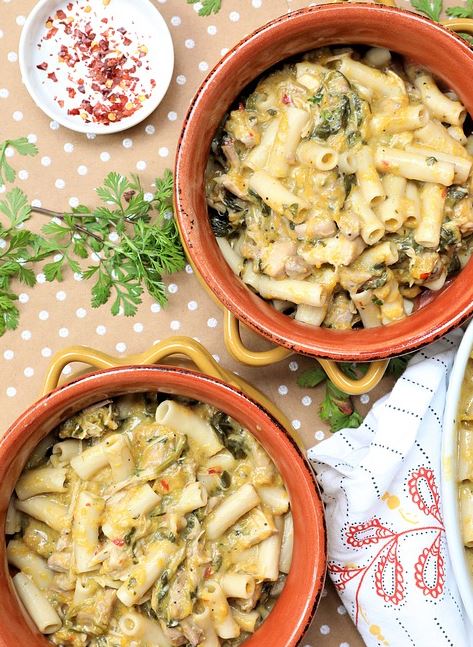Pasta is one of the world’s most beloved foods, famed for its versatility and deliciousness. Coming in a wide range of shapes and sizes and matching perfectly with a myriad of ingredients like meats, veggies, and sauces, it’s no surprise that the average American consumes around 20 lbs of pasta per year.
With such a deep love of pasta embedded into American culture, it’s only natural that the vast majority of American kitchens can’t be quite complete without a pasta pot or too. The perfect tool for pasta preparation, a pasta pot makes it so simple to boil water, cook your pasta, and then drain the water afterward, reducing the risk of burns and minimizing waste as well.
But how do you choose the best pasta pot to meet your needs? There are many different pasta pots out there, varying in size, construction, features, and performance. Some are much stronger than others and far easier to use too, while others can actually hamper your cooking experiences, rather than improving them. Read on for key factors to bear in mind when looking for a top-quality pasta pot.
Extras
As noted by Product Diggers, “Many pasta pots come with a strainer and steamer attachment, which allows it to be multifunctional.” These extra accessories might seem simple at first but can make a massive difference when it comes to your day to day cooking in the kitchen.
The steamer allows you to use your pasta pot for all kinds of other ingredients, like veggies, while the drainer makes it so much safer and simpler for you to drain the water when your pasta has finished cooking. To get the best experiences out of your pasta pot, opt for one that comes complete with these extra items.
Size
One of the most important aspects to focus on when choosing the right pasta pot for your home is its size, and the right size for you will depend on how much pasta you like to cook and how many people you cook for on a regular basis.
You may go for 6 liters (approx. 6 quarts) pot for 450 grams (approx. 1 lb), and and 8 liters (approx. 8 quarts) pot if you make 900 grams (approx. 2 lbs.) without any issues.
For a pasta pot size is between 6 and 8 liters (6 – 8 quarts), and it should be filled about 3/4 of the way or about 4-5 liters with water for 450 grams (approx. 1 lb) of pasta.
If you live alone or with a partner, you won’t need a huge pasta pot, but if you’ve got a big family or regularly have friends over for dinner, an extra-large, 12-quart stockpot might be the right option for you. Don’t forget to think about where you’re going to store the pot when it’s not in use and make sure you have enough space if you opt for a larger model.
Compatibility
You also need to think about what kind of stove you’re going to be using your pasta pot with, as this can have an impact on which model you should actually buy. Some pasta pots are only suitable for use on gas stoves, for instance, while others are fully compatible with induction tops.
There may even be cases where you want to place the pot right in the oven, so you need to find one that can be classed as oven-safe. Similarly, after cooking your pasta, if you’d like to clean your pot in the fastest way, right in the dishwasher, remember to look for a model that is dishwasher-friendly.
Construction
Pasta pots can be made from a wide range of different materials, including copper, cast iron, stainless steel, and aluminum. Each of these materials has its pros and its cons, and it’s worth comparing your options and weighing up the advantages of different materials in order to come to a decision on the right one for you.
Cast iron is famed for its strength and non-stick nature but can be quite heavy and expensive, while stainless steel is super easy to clean and naturally non-stick too. Aluminum pasta pots tend to be the cheapest, so could be a good choice for those on a budget, plus they heat up very quickly but aren’t non-stick.
Conclusion
It’s clear to see that a good pasta pot can help out a great deal in the kitchen. Whether you’re cooking up some mac ‘n cheese for the kids or planning to test out a new recipe for the whole family to enjoy on a special occasion, this handy pot can make your cooking experiences way more enjoyable. Just be sure to focus on the aspects outlined above when shopping for your next pasta pot in order to find one that really meets your needs, rather than diving in headfirst and buying the first pot you see.

Do you know
The various kinds of Pasta are categorized as: pasta secca (dried pasta), pasta fresca (fresh pasta), pasta all’uovo (egg pasta), pasta ripiena (filled pasta or stuffed pasta, like ravioli), gnocchi (soft dough dumplings).
The various Pasta cooking styles are categorized in: pasta asciutta (or pastasciutta, in which the pasta is boiled and then dressed with a complementary sauce or condiment), pasta al forno (baked pasta, in which the pasta is incorporated into a dish, along with the sauce or condiment and subsequently baked), and pasta in brodo (pasta in broth, in which the pasta is cooked and served in a broth, usually made of meat).
The various Pasta sauces (mostly used for pasta asciutta and pasta al forno) are categorized into two broad groups: sughi rossi (red sauces, with tomatoes) and sughi bianchi (white sauces, without tomatoes).
People also read
What 200 Calories Look Like In Different Foods
These 25 Stunning Photos will Show You What Peoples Eat Around The World!!
